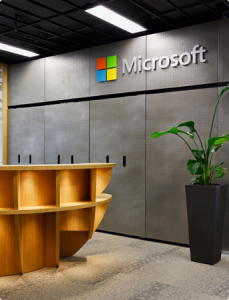D2C: The New Dawn in The eCommerce Industry
Defining Direct-To-Consumer(D2C)
For the last few years, direct-to-consumer (D2C) eCommerce has grown by leaps and bounds and the phenomenon continues unabated. D2C is actually bringing about a fundamental change in customer priorities and desires together with innovation in the national consumer space. The strategy gets rid of the obstruction between the client and the manufacturer, at the same time facilitating enhanced management of the brands by the companies.
The clientele is the biggest beneficiary. They experience flexible delivery choices, diminished periods of waiting, and personalized deliveries as regards requirement, – everything from the comfort of home. Additionally, the pandemic era has aided companies to have an unwavering source of revenue by resorting to the D2C system and rejecting the indirect selling method. So, the prospect appears very bright for D2C with a lot of sub-segments cropping up due to the thriving customer demands and fresh logistic models to serve them, powered by eCommerce and the digital economy.
Companies irrespective of size, have started to take note of D2C as a very viable option by the way they can strengthen relationships with their clientele. By having recourse to D2C, organizations can directly sell merchandise to their clients bypassing third-party wholesalers and retailers. However, it’s noteworthy that D2C eCommerce is solely not about product manufacturing but also encompasses marketing, sales, distribution, retail and client experience.
Merits
1. Full Control
D2C enables brands to have full control over the value chain. The complex value chain is simplified by discarding the middlemen. The producers have total control over marketing strategies and sales endeavours. So the organization can have full ownership of the clients’ experience from the research stage up to the purchase point. Rapport with customers is built without any dependence on retailers.
2. Omnichannel Experience
Omnichannel experience is offered. This is a multichannel process for sales which provides the clientele with a seamless experience in buying, irrespective of the various modes of shopping, for instance online from a mobile device, desktop or even a brick-and-mortar store. Nowadays, customers desire to order goods from brands via different channels and D2C simply facilitates this by providing multiple touchpoints.
3. Reduce Costs
D2C helps to reduce costs. Since the process eliminates middlemen and allows them to sell directly to customers, the companies can remove distribution costs and expand their share of the profit margin. Consequently, the manufacturers are able to keep the prices at the most reasonable levels and the buyers benefit by saving a lot of money.
4. Organizations can get direct feedback from their clientele due to D2C. So the comprehension and cognizance of the customers’ preferences and desires are better and can be responded to properly.
5. Faster marketing is possible
Faster marketing is possible. Usually, a distributor and retailer provide shelf space when a product is being launched. For a manufacturer, this is quite a cumbersome affair. D2C makes the process of dependence on others redundant. So, it is utilized by many popular brands to float experimental merchandizes in the market without engaging distributors and dealers and thus jeopardizing relationships. Therefore, without requesting shelf space for a dummy run, D2C permits experimenting with a new product and finding out its viability.
Key Statistics
A. Last year, one out of every three buyers purchased directly from a company’s website.
B. The value of the D2C market in China is predicted to reach 123 billion by 2024.
C. The value of D2C sales in the UK is expected to reach 120 billion by 2023.
D. In 2020, there were 500k jobs associated with D2C sales in the UK. It is assumed, that the number will reach 618000 in the year 2023.
All these make D2C, the new dawn in the eCommerce industry, clearly visible on the horizon.










